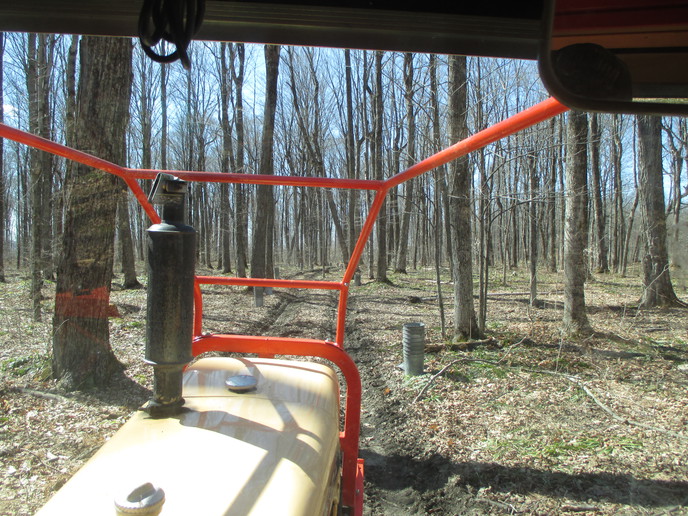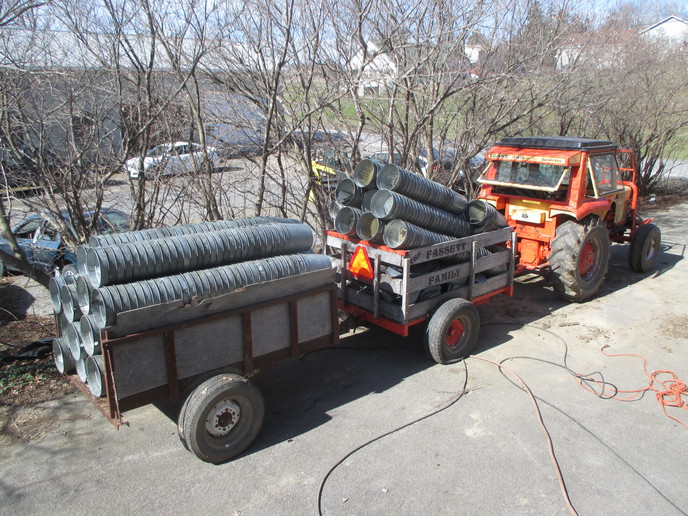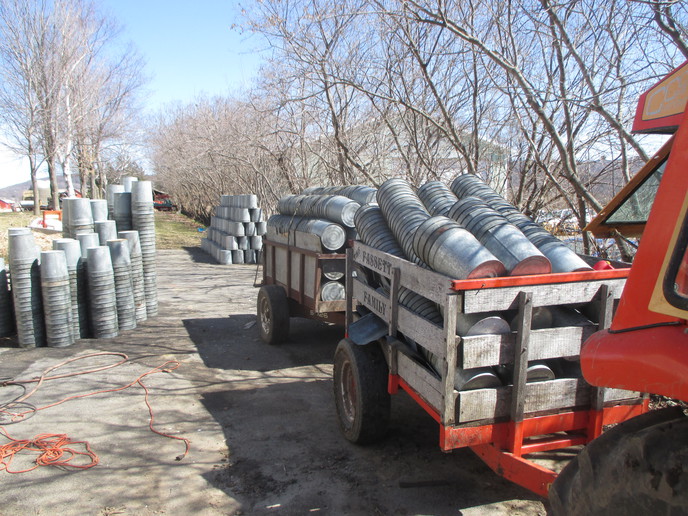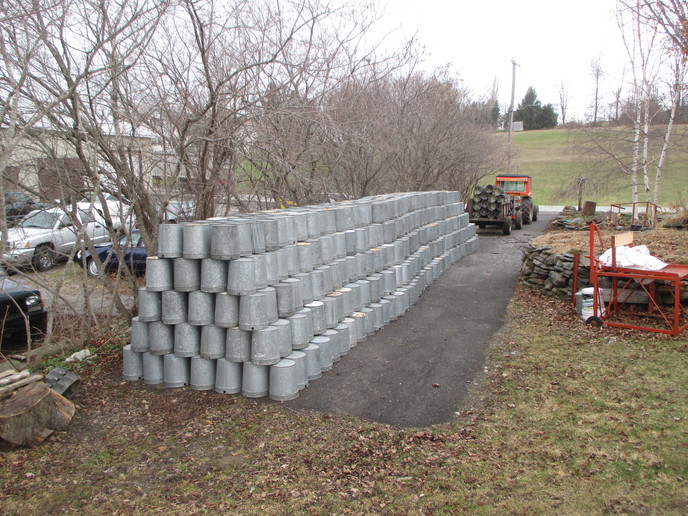Adirondack case guy
Well-known Member
We went from winter-spring syrup season, to planting season in a matter of days.
The uncles and cousins involved with the farm operation are all busy preping and planting oats and alfalfa.
The few of us left, pulled all the buckets and spiles and carried all of them to the roadsides.
I have been washing buckets here at my home with the pressure washer. As of last night I had 1100 bkts, washed and stacked to dry in my driveway. There are 25 buckets per row and 44 rows in the pic.
I took today off, to go to Runnings and buy my garden seed, and BS with a couple of friends.
We still have 1200 bkts, covers, and spiles lining some woods roads waiting for me and hopefully a faimly member to pick the rest of them tomarrow, so I can get them washed, and then get them back up to the sap house to store them away until next year. I have been concentrateing on getting the buckets cleaned. Tomarrow afternoon rain is supposed to set in for several days and I am hopeing that I will have some help to wash up the evaporator pans and other equipment in the saphouse and get all the buckets that I have washed stored away for next season.
Still waiting for the fat lady to sing, HeHe.
Loren, the Acg.




The uncles and cousins involved with the farm operation are all busy preping and planting oats and alfalfa.
The few of us left, pulled all the buckets and spiles and carried all of them to the roadsides.
I have been washing buckets here at my home with the pressure washer. As of last night I had 1100 bkts, washed and stacked to dry in my driveway. There are 25 buckets per row and 44 rows in the pic.
I took today off, to go to Runnings and buy my garden seed, and BS with a couple of friends.
We still have 1200 bkts, covers, and spiles lining some woods roads waiting for me and hopefully a faimly member to pick the rest of them tomarrow, so I can get them washed, and then get them back up to the sap house to store them away until next year. I have been concentrateing on getting the buckets cleaned. Tomarrow afternoon rain is supposed to set in for several days and I am hopeing that I will have some help to wash up the evaporator pans and other equipment in the saphouse and get all the buckets that I have washed stored away for next season.
Still waiting for the fat lady to sing, HeHe.
Loren, the Acg.





